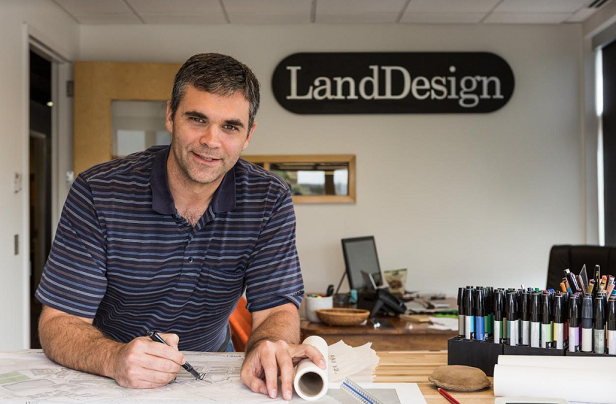Charlotte, NC—Landscape architecture and civil engineering firm, LandDesign, has expanded to three new US markets in the last five years, bringing the firm to six offices nationally. While LandDesign has made a name for itself within master-planned communities, public spaces, mixed-use districts and parks, it is also making headway within the commercial real estate sector.
“We focus on the land and creating the experiences at the human level, the street level, and the park level, rather than only at the building level. As we've seen, buildings often have a shelf-life – but the fabric of the place, especially the public space, often last forever, Rhett Crocker, President of LandDesign tells GlobeSt.com. “The public spaces are where people can connect outdoors and escape the busy day by taking a walk to amenities, entertainment and more. This is where we work best—from the scale of the city, to the scale of the park.”
Creating great urban areas and public spaces that cater to everyone is an overarching trend dominating multifamily, office and retail right now, Crocker says. There is now more of a drive to design a seven-days-a-week, 18-hour experience rather than just a singular-use experience.
For example, large office parks with public areas or parks that have primarily served office users would be vacant in evenings or weekends. Also, large shopping areas or malls that had more internal public spaces are now being redeveloped into outdoor spaces surrounded by higher-density residential, office and entertainment uses.
In short, the shift is to create more “complete” places where people can live within walking distance of the office or entertainment venues. Crocker refers to it as complex because these spaces are designed to serve everyone while still remaining balanced for each use. Creating great concentrated parks of larger area—rather than several small areas—works, because people like to be around other people, where the action is, Crocker says.
Mobility, Time Management Will Also Influence Public Spaces
The overlap between mobility and better public spaces is another trend Crocker sees gaining traction.
“Technology is continuing to advance and create new ways for us to be connected and to commute to and from work. I believe this will be a huge factor in how places develop over the next generation as we move away from car-centric designs and into a place where cars are secondary,” says Crocker.
People also want their time back. “That's the one thing even the richest communities cannot buy. However, we can create designs that will give them more time in their daily life,” explains Crocker. “This can be achieved by siting amenities and entertainment close by, to lessen commute time, for example. Higher-density and more options for living types is another way. Having jobs and employment opportunities closer and so much more.”
© Touchpoint Markets, All Rights Reserved. Request academic re-use from www.copyright.com. All other uses, submit a request to [email protected]. For more inforrmation visit Asset & Logo Licensing.







